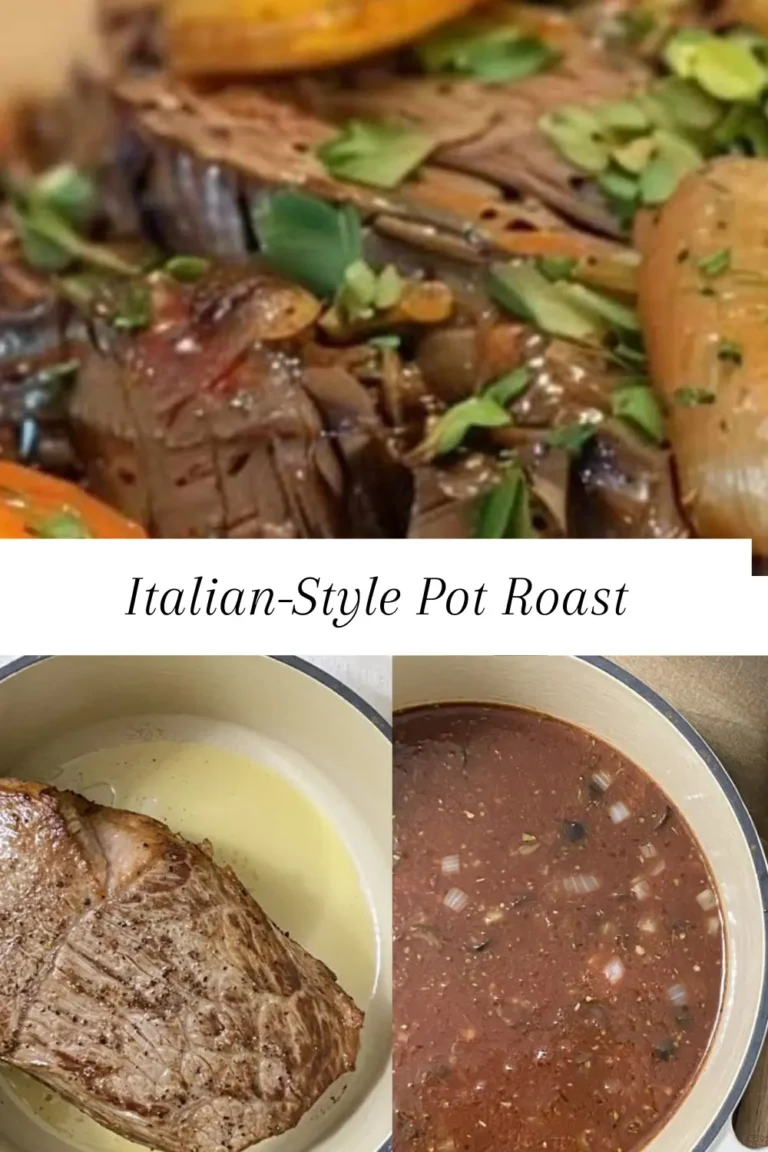Beignets avec fromage de légumes
When I first encountered beignets avec fromage de légumes, it was at a quaint bistro nestled in the heart of Paris. The aroma wafting from the kitchen was nothing short of intoxicating, a harmonious blend of savory notes that promised a culinary delight. I was immediately captivated by the idea of combining the traditional French beignet with the innovative use of vegetable cheese. This dish quickly became a favorite in my household, not just for its delectable taste but also for its versatility.
Beignets, typically known for their sweet variations, take on a whole new dimension when paired with fromage de légumes. The crispy exterior gives way to a soft, flavorful interior, where the richness of the cheese melds seamlessly with the subtle earthiness of the vegetables. This combination creates a balance of flavors and textures that is both intriguing and satisfying. Whether served as a delightful snack or a hearty meal, beignets avec fromage de légumes never fail to impress.
The beauty of this dish lies in its adaptability. You can experiment with different types of vegetable cheese, each bringing its own unique character to the beignet. From the creamy tang of cashew cheese to the robust flavor of almond-based varieties, the possibilities are endless. This flexibility allows you to cater to various dietary preferences and occasions, making beignets avec fromage de légumes a staple in any culinary repertoire.
Cooking this dish is a joyous experience, especially when shared with loved ones. The process of preparing beignets avec fromage de légumes fosters a sense of connection and togetherness. There is something profoundly satisfying about creating a dish from scratch, watching it transform from simple ingredients into a mouthwatering masterpiece. It’s a reminder of the joy that comes from sharing good food and creating lasting memories around the dining table.
Gathering Your Ingredients
Creating the perfect beignets avec fromage de légumes begins with the careful selection of ingredients. The harmonious blend of vegetables and cheeses forms the foundation of this savory delight. Key vegetables such as carrots and onions are essential, offering a balance of sweetness and sharpness that complements the rich, creamy cheeses. Carrots add a subtle sweetness and vibrant color, while finely chopped onions provide a savory undertone, enhancing the overall flavor complexity of the beignets.
Choosing the right cheese is crucial. Cheddar, with its sharp and tangy profile, melds beautifully with the vegetables, adding depth to each bite. Mozzarella, known for its mild flavor and excellent melting properties, ensures a gooey, satisfying texture. Alternatively, a blend of these cheeses can be used to achieve a more nuanced flavor profile. The interplay of different cheeses can elevate the beignets, making each mouthful a delightful experience.
The texture of the beignets is another important aspect, heavily influenced by the choice of flour and maïs semoule. All-purpose flour provides the necessary structure, while the addition of maïs semoule (cornmeal) contributes to a slightly crunchy exterior, distinguishing these beignets from their sweeter counterparts. The right balance between these two ingredients ensures that the beignets are both crispy on the outside and soft on the inside.
Fresh herbs such as parsley and coriander play a pivotal role in enhancing the flavor profile of beignets avec fromage de légumes. Parsley adds a fresh, green note, while coriander introduces a hint of citrus. These herbs not only add complexity to the flavor but also provide a visually appealing touch of color. Optional ingredients like bell peppers or spinach can be incorporated to add a unique twist, offering additional layers of flavor and texture.
In summary, each ingredient in beignets avec fromage de légumes serves a specific purpose, contributing to the overall success of this savory dish. By carefully selecting and combining these elements, you can create beignets that are both delicious and memorable.
Mixing and Preparing
Creating perfect beignets avec fromage de légumes begins with meticulous preparation of the vegetables. The key to achieving the ideal texture lies in properly grating and chopping your chosen vegetables. Opt for a fine grater to ensure the vegetables blend seamlessly into the batter, preventing any large chunks that could disrupt the consistency. After grating, give them a quick chop to guarantee uniformity. This step is crucial as it ensures even cooking and a harmonious blend of flavors in your beignets.
Next, focus on combining your dry ingredients. In a large mixing bowl, sift together the flour, maïs semoule (cornmeal), and baking powder. This not only removes any lumps but also ensures an even distribution of the leavening agent, which is essential for achieving a light and airy texture in your beignets. Once these are thoroughly mixed, set the bowl aside.
The wet ingredients are equally important. In a separate bowl, whisk together the eggs and milk until they are well combined. Gradually incorporate the wet mixture into the dry ingredients, stirring continuously to prevent any lumps from forming. The aim is to achieve a smooth and homogeneous batter. At this stage, patience is key; take your time to mix thoroughly, ensuring all components are well integrated.
To infuse your beignets with a rich, cheesy flavor, carefully fold in the grated cheese. Ensure the cheese is evenly distributed throughout the mixture to provide a consistent taste in every bite. This can be achieved by gently stirring the batter with a spatula, making sure to scrape the sides and bottom of the bowl. For an enhanced flavor profile, consider using a blend of cheeses to add complexity to your beignets avec fromage de légumes.
Remember, the art of crafting beignets lies in the details. From the precise preparation of vegetables to the careful mixing of ingredients, each step contributes to the final product’s quality. By following these guidelines, both novice and experienced cooks can create delicious, savory beignets that are sure to impress.
Frying to Perfection
When preparing beignets avec fromage de légumes, mastering the frying process is essential for achieving that perfect balance between a golden, crispy exterior and a soft, cheesy interior. Choosing the right type of vegetable oil is the first step. Oils with a high smoke point, such as peanut oil or canola oil, are ideal for frying beignets because they can withstand the necessary high temperatures without breaking down.
Maintaining the oil at the ideal temperature, around 350°F (175°C), is crucial. If the oil is too hot, the beignets will brown too quickly, leaving the inside undercooked. Conversely, if the oil is not hot enough, the beignets will absorb too much oil and become greasy. To test the oil’s readiness, use a kitchen thermometer or drop a small piece of dough into the oil. If it sizzles and rises to the surface within a few seconds, the oil is ready for frying.
When frying beignets, it’s important to avoid overcrowding the pan. Frying in batches allows each beignet to cook evenly, ensuring a uniformly crispy texture. Overcrowding the pan can lower the oil temperature, resulting in greasy and unevenly cooked beignets. Gently lower each beignet into the hot oil using a slotted spoon, and fry them until they are golden brown on all sides, typically for about 2-3 minutes per side.
Once fried, transfer the beignets to a plate lined with paper towels to drain excess oil. This step is key to maintaining their crispiness. For an appealing presentation, consider stacking the beignets on a serving platter and garnishing them with a sprinkle of fresh herbs or a dusting of powdered cheese. Serve them warm to ensure the cheese inside remains melty and inviting. By paying close attention to the frying process, you can ensure that your beignets avec fromage de légumes are irresistibly crispy and delicious, making them a hit with your guests.
Ingredients
Regarding the beignets:
- One tasse of raw carrots
- One tasse of ribbed carrots
- One teaspoon of finely chopped parsley (yellow, green, and russe)
- Half a tasse of finely chopped onions
- Two tasses of râpé cheese (cheddar, mozzarella, or blend)
- Half a tasse of flour for every use
- 1/2 teaspoon of maïs semoule
- Two large eggs
- Half a teaspoon of milk
- 1 cup of coffee with a chemical levure
- One coffee cup of sel
- Half a cup of black pepper with coffee
- One cuillère of coffee powdered almonds
- One cuillère à café au poivre
- One soup spoonful of fresh persil or dried coriander (facultatif)
- Regarding the friture
- Vegetable oil for friting
Preparation
- Apply as much humidity as you can. This step is essential to ensuring that your brownies are crispy and
- pas détrempé.
- Finely chop the onion and peppercorns.
- Step 2: Get the paste ready
- In a large bowl, combine the chopped onions, chopped peppers, chopped carrots, an
- onion rings cut in half.
- Pour le fromage râpé sur les légumes et bien mélangez.
- Dans une autre bol, mélanger la farine à toutes les usages, le sel, le poivre black, la levure chimique, la semoule de maïs,
- Ail powder with paprika.
- Pour le lait en fouettant après avoir battez les œufs dans un autre bol.
- Graduellement incorporer les ingrédients secs au mélange de fromage et légumes, puis l’œuf et lait.
- blend. Remember to stir until all the ingredients are well combined. If the paste seems too thick to you, you may add an
- extra milk a little bit.
- Step 3: Lightly fry the beignets
- Heat up around 1/4 cup of vegetable oil in a large medium-sized saucepan.
- Once the oil is hot, place several pastry cutters in the pot and gently press them with your fingers.
- from the cuillère to create little galettes.
- Fry the beignets in batches, giving each side 3 to 4 minutes to fry or until they are well cooked.
- Et croustillant. Pour le surplus d’huile sur une assiette tapissée de paper absorbant et réfrigérer les beignets cuits
- Step 4: Serving
- Serve the vegetable beignets with warm cheese and garnish with fresh parsley or cilantro, if preferred.
- You may eat these beignets by themselves or with your favorite topping, such as ranch or aigre.
- crème or spicy mayonnaise.
- Advice for the ideal beignets
- Drain the vegetables: be careful to remove any excess moisture from the carrots and any other liquid.
- veggies to keep the croustillant beignets fresh.
- Selection of cheese: Feel free to use whatever cheese you choose, although a combination of mozzarella and cheddar works well.
- very well.
- The cooking temperature should be such that the oil is hot enough before frying the beignets. If the oil is not heated
- As you may imagine, the beignets will get greasy from absorbing too much oil.
- In summary
- Vegetable beignets with cheese are a versatile and delicious dish that you can make at home with ease. Ils
- are ideal for satisfying your savory cravings and a great way to include more vegetables.
- in your food intake. Next time you’re looking for a quick and tasty snack or aperitif, give this recipe a try.
- Appreciate it!
- Enjoy !







